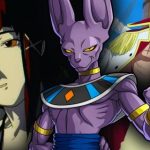Mecha has been a ubiquitous element of anime almost since the creation of the medium, with some of the earliest productions featuring robots in some form. Mighty Atom, known in many territories as Astro Boy, and Tetsujin 28-go, also referred to as Gigantor, established many elements that would become common in anime featuring robotics.
As years became decades and anime grew to encompass more mature forms of storytelling and wider varieties of genres, mecha evolved alongside it. Now, there are copious amounts of anime and manga that share almost nothing aside from the inclusion of human-controlled robots. Though mecha is considered more of a theme than a genre, there are many elements that are common in mecha anime that lead to it functioning similarly to a standalone genre. However, there are also anime that feature multiple disparate elements or include mecha as a side concept. This leads to the mecha theme encompassing the widest variety of tones and elements in all of anime.
What Is Mecha?

Mecha as a theme is typically used in genre works such as science fiction or science fantasy. Sometimes mecha are an element of an advanced or futuristic civilization that utilizes many other forms of fictional technology, such as in the colony ships of Knights of Sidonia. Other times, the existence of mecha is the very element that places the work in the science fiction genre, such as in the otherwise-mundane setting of Bokurano.
However, variations of mecha outside of science-related genres do exist. Fantasy anime such as The Vision of Escaflowne and Knight’s & Magic feature mecha. Combinations of these different elements are fairly common; the world of Eureka Seven features standard elements of science fiction but also depicts a fantastic planet full of science-defying organisms and sky-surfing mecha. Some anime push the boundaries of what counts as mecha; Neon Genesis Evangelion’s titular weapons are primarily organic constructs covered by mechanical exoskeletons and other elements.
Super Robot vs. Real Robot

Mecha are typically categorized into two major subsets; super robot and real robot. Super robot anime built upon elements set by classic manga and anime such as Mazinger and Getter Robo; they are not as common today, but mecha anime do occasionally utilize super robots such as in Tengen Toppa Gurren Lagann and Promare. These robots are typically piloted by humans either remotely or inside the robot in a cockpit, though they’re occasionally self-piloting AI. Each super robot is unique in the show’s world and is typically extraordinarily powerful. In contrast, real robot anime became more popular after the original Mobile Suit Gundam defined the genre in 1979; these stories often feature mass-produced mechanical war machines similar to how tanks and fighter jets operate in modern times.
While real robot shows often feature unique robots for the protagonist and other major characters, these are usually defined as prototypes or customized models rather than truly unique machines. For example, while the original RX-78-2 Gundam piloted by Amuro Ray in the original series could be seen as a super robot due to its unique existence in the show and its overwhelming power, later series installments such as The 08th MS Team and Thunderbolt establish it as a prototype machine and depict multiple pilots using Gundam variations during the same time period. Later real robot franchises such as Eighty-Six and Armored Trooper VOTOMS feature protagonists who pilot customized versions of standard mecha.
Real robot stories also typically feature human-piloted robots; the majority depict them as having cockpits, though remotely-piloted mecha such as the Endlaves of Guilty Crown are also depicted. Real robot stories are typically darker than super robot stories since they tend to focus on the horrors of war and the brutality of combat, though this is not always the case. Space Runaway Ideon is a super robot anime that is often lighthearted, but ultimately features a dark and brutal ending in the movie Be Invoked. Meanwhile, while Patlabor as a whole features many serious storylines, the TV series often functions like a sci-fi sitcom featuring real robots.
Mecha Shows Can Combine a Variety of Genres and Storytelling Elements

Similarly, many different anime merely feature mecha as one element in a variety. A unique and prominent example is Full Metal Panic!. While other mecha shows feature school life elements, such as Mobile Suit Gundam: The Witch from Mercury, FMP’s school elements are a significant part of the show to the point that the entire Fumoffu! season was produced without featuring any of the mecha or spy elements the series is also known for. Long-running shows may include robots in single story arcs, such as the mecha of Vegapunk from One Piece. While this doesn’t retroactively make the entire show a mecha show, such storylines are still noteworthy and worth discussing.
Code Geass takes this mix of genres up to eleven by adding in many genre fixtures to the point that it logically shouldn’t work, but a deft balance of disparate elements prevents the series from folding under its own weight. Episodes variously focus on mecha combat, royal drama, political machinations, the impacts of war and colonization and even outrageous school-life shenanigans. These ideas are combined to the point that the show’s singular identity is a mishmash of each of these rather than one theme taking center stage. Politics often involves the impacts of the anti-colonial rebellion, the monarchy directly causes most of the problems faced by soldiers on the ground and many of the central mecha pilots attend the same school (and at one point, Suzaku even uses a mecha during a school festival to toss a giant pizza dough).
While war settings are extremely common for mecha anime, Code Geass still stands out from many other franchises because of its unique combination of so many genres and themes held together by Ichiro Okouchi’s skillful writing. Mecha is not the show’s only appeal, but it is an important facet because without it, the show would have a completely different identity.

Mecha is so versatile because it is possible to throw giant robots into almost any setting. Gundam by itself is proof, as while the core appeal of the series remains similar to the themes of the original, many spinoffs tackle different genre elements. Mobile Fighter G-Gundam uses super robots in place of real robots, Build Fighters and its related media lowers the combat stakes to a gaming competition similar to Yu-Gi-Oh! and SD Gundam features anthropomorphic mecha characters in a parody setting.
While not every franchise that tries to combine multiple genres works as well as the original two seasons of Code Geass, many other mecha franchises feature combinations of speculative fiction, war, politics and action unlike any other theme that anime has to offer.










